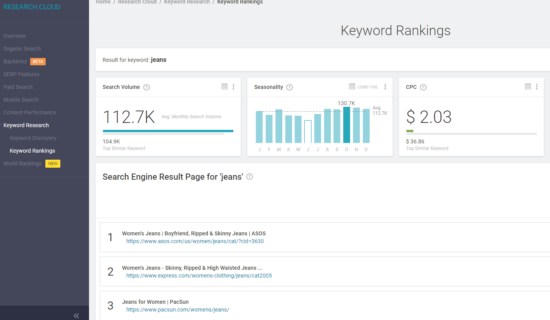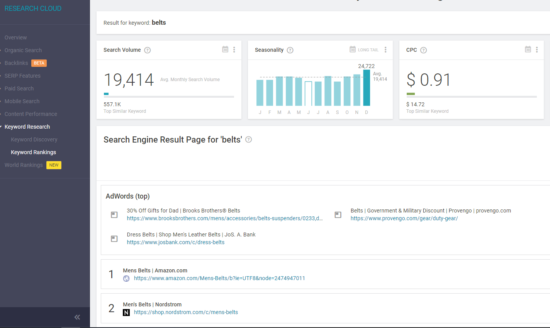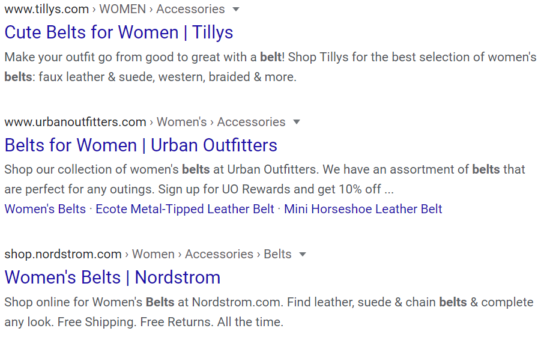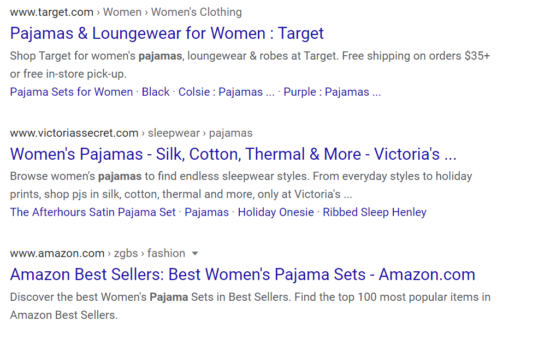As SEO becomes more about intent and less about exactly matching the search query, keyword research has become more complicated. It is common knowledge that when you are trying to rank for a keyword that does not include gender, like shoes, you are attempting to create the best possible page that achieves the purpose of highlighting your shoes that work for everyone. There are terms that are considered traditionally feminine or masculine, such as “cute pink skirt” where the searchers are assumed to be female or purchasing for a female.
A growing trend has evolved where retailers and Google have started making stronger assumptions about what genders will search for specific keywords. Some retailers have chosen to remove the non-gendered versions of the pages that display their products, and Google has been rewarding them with a higher ranking. While some retailers have entirely removed the non-gendered versions, this has raised many intriguing questions that we will attempt to answer.
How to determine if a keyword has gendered search results even though it does not have a gender in the search phrase?
For inclusion criteria, we determined that a search phrase is considered generally gendered if more than 40% of the top 10 organic results in Google’s SERP include a gendered term (such as man, woman, girl or boy) in the title tag. A phrase is considered gendered to a specific gender if over 40% of the top 10 organic results include specifically gendered terms in the title tag. To calculate the data, I used the Searchmetrics Research Cloud to analyze the ranking of 10,000 clothing and shoe-related keywords.
I also analyzed the title tags for a total of 14 gendered keywords (7 male, 7 female). Of those 10,000 keywords, 2% were search phrases that included gendered terms and were excluded. Of the non-gendered keywords, 20% of SERPs were marked as gendered, with 13% being gendered female and 3% being gendered male. The remainder had gendered results but were not targeted more at either gender. I believe these percentages are underreported since some e-commerce sites didn’t include gender in their title tag, even though the results are 100% targeted at a specific gender (you can see this through the top results and the URL structure).


How does this affect keyword research?
When researching a term or group of terms, do the additional step and determine if they are gendered. If they are gendered, determine if the keyword is exclusive to one gender, such as “Pajamas” and “Tank tops”. If it is not exclusive, but most of the results still contain gender in the title, determine if the title tags target both adult and kids gendered keywords or not. Understanding gendered keywords will give you a better idea of the purpose of the page, and if you need to adjust your SEO strategy to rank for those keywords.
 How should you adjust your SEO strategy for gendered keywords?
How should you adjust your SEO strategy for gendered keywords?
If your targeted keywords are exclusive to one gender, you need to decide if there is enough opportunity to promote yourself for the opposite gender. Although promoting yourself for the other gender will make it harder to rank, you will be speaking to an audience that current search results are not targeting. If you promote yourself for the primary gender, you need to make the decision if you still want a gender-neutral version of the page you want to rank, but then you are setting yourself up for SEO cannibalization.
One example of a keyword where differentiation would be ideal is “jeans”. “Jeans” is an extreme example where the primary searcher is female even though men wear jeans. The search volume for “men’s jeans” is about 73% of the search volume of “jeans.” The search volume indicates that men are searching for jeans, but when they see search results only targeting women, they revise their search query to find out what they are looking for. Another way you could adjust your SEO strategy is to make your page gender-specific if you believe a keyword is leaning towards one gender. Being one of the first websites to optimize for one gender can give you a ranking advantage for a term. It is a high-risk move, but if it is a very competitive term and you have internal data that shows that one gender buys that item significantly more than the other, the risk could be worth it.

How does this affect long-tail keywords?
By adding certain words to search phrases, this can change the gender of the search results. One example is “belt”, which transitions from mixed-gender to female-only when you add the term “cute”, “trendy” or “waist”. “Belt” transitions to male-only when you add words like “cool” or “best”. Colors and materials accomplish similar things, such as “gold” makes “belt” female, while “leather” can make the search result male. If you are using taxonomy combinations to generate long-tail keywords, verify that you are creating the correct gender combinations. If you are writing content for long-tail keywords, ensure the phrases you are targeting show the search results you are looking for.


Should you remove all non-gendered content from your e-commerce website?
Although many major retailers have already removed non-gendered content from their site, I wouldn’t recommend making it your top priority. Start by analyzing your top keywords and determine if prioritizing gendered pages or removing non-gendered pages would be appropriate.
If you are creating new pages that are mostly targeting gendered keywords, determine if you need neutral keyword-focused pages. Additionally, running A/B tests on your page titles with and without gendered words and monitor CTR and conversion rates can be helpful. In general, always consider gender, even when you are trying to rank for search phrases that don’t include any gender words.
*The 10,000 keywords were generated using the Google Keyword Planner tool and the Searchmetrics Research Cloud. The top 10 rankings for each keyword were pulled using Searchmetrics Research Cloud API and then analyzed using automated formulas. Each title tag was checked for the 14 terms and was tagged as either as gendered, male, or female.
We can help with your SEO and Content strategy – get in touch with one of our experts to discuss solutions for your business.

 How should you adjust your SEO strategy for gendered keywords?
How should you adjust your SEO strategy for gendered keywords?